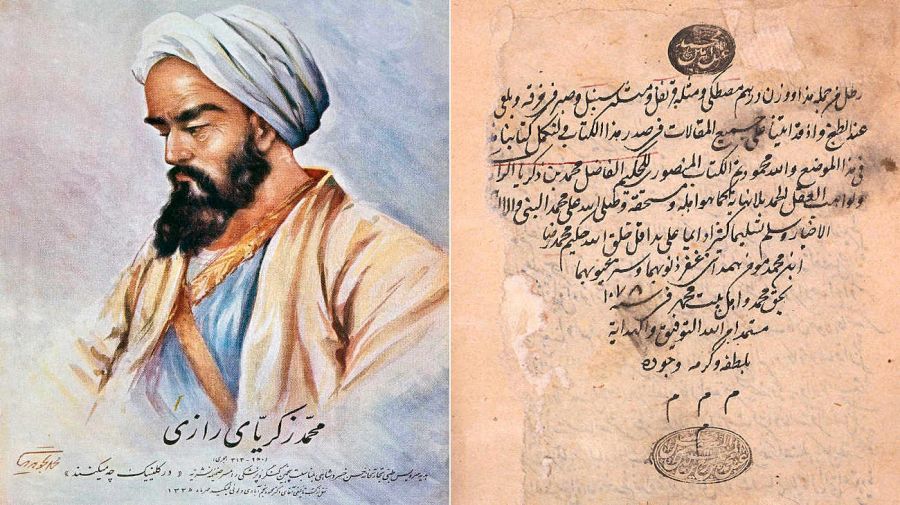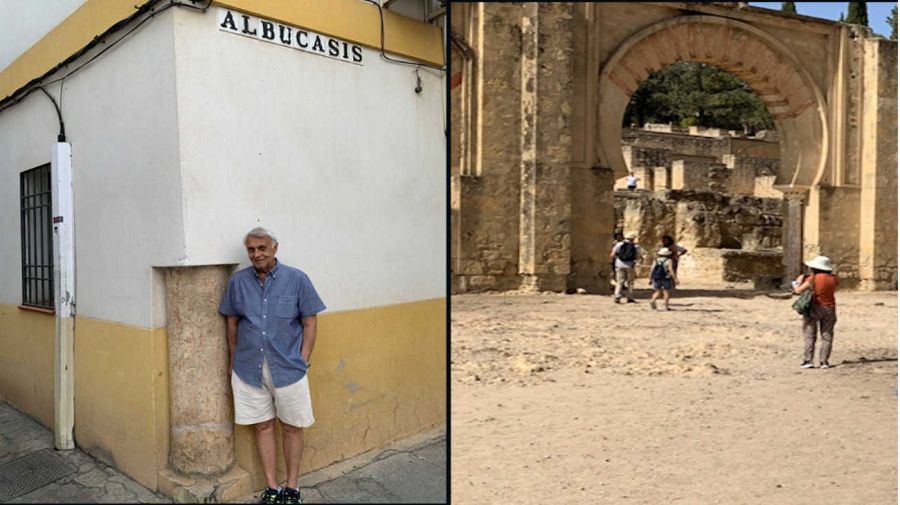Arabic medicine was a pillar of Western medicine.

arabic medicineIslamic medicine, also known as Islamic medicine, has had a significant influence on the development of medicine. Western medicine in general and surgery in particular, especially the period of the Islamic Renaissance, which took place between the mid-8th and 13th centuries AD.
However, not only the Arabs, but also some eastern peoples made a huge contribution to the development of culture and science in these regions and were subsequently absorbed by Western civilizations.
Development medical works written in Arabic and translated into Latin and Greek. around the 11th and 12th centuries had a significant influence on the development of modern medicine, leaving its imprint on all current specialties, mainly surgery.
The development of Arab medicine was so important that it demonstrated that the theory of humor Galenthe most important physician of Greek antiquity, was wrong and could not be recognized as valid.

Ar-Razis, born in Iran in the 10th century, was a great Islamic thinker, eminent physician, philosopher and scientist. He wrote several works and is known as father of pediatricssince he wrote the first treatise on this specialty, but being a student of the works Galenwas the one who came to the conclusion that Galen’s theory was wrong.
Arabic medicine was a pillar of Western medicine.
There are many Arab doctors or doctors from the Islamic world who have achieved great success in all fields of medicine, but one of the most recognized is the so-called “father of modern surgery” Abul-Qasim ibn Abbas al-Zahrawi, better known as Albucasis born in the 9th century Medina Azahara a few kilometers from the city of Cordoba in southern Spain, which today lies in ruins.

The city of Azahara was known as the “city of light” and was beacon of development in Andalusia because with his luminosity of knowledge he guided the development of the medical sciences of that time, especially in surgery.
Bible of Western Doctors
Albucasis was so prolific in his activities that he 30-volume encyclopedia For medical information please call A-Tasrifwas translated first into Latin and then into other Western languages. His discoveries and treatment concepts are still used today, mainly in the field of surgery.
His work on surgery was recognized throughout the world, and he not only developed innovative operations, but also introduced to the public surgical instruments whose relevance remains unchanged today, albeit with modern modifications to suit the times.
Books on medicine Albucasis They were reference texts in medieval Europe, up to the Renaissance and the humanism of Central Europe: for five centuries they were the “guide” to the actions of surgeons “in virtually the entire then known world.”
In surgery, Albucasis expanded his activities in many areas, ranging from suturing wounds using catgut And silk threads: (they are still in use today) and also cauterization from the same thing. Many of the works of this “surgical genius” were devoted to the invention of instruments, including cannulas and others for internal use, for removing foreign bodies in the ear, urethra, etc.
Was first stitched up the wound of the trachea and larynxrecovering the patient and saving him from death.
Young man undergoes ‘awake’ surgery to remove brain tumor and answers questions during surgery
On the other hand, there are scholars of the history of surgery who do not hesitate to recognize this “huge” surgeon as father of neurosurgery: skull fractures, head injuries and subdural hematomas They were treated successfully using their techniques and instruments. On the other hand, in his famous encyclopedia he describes for the first time the treatment hydrocephalus due to the evacuation of cerebrospinal fluid.

Estimated developed more than 150 instrumentswhich were widely used in events surgical by European doctors for 5 centuries and who subsequently continued to benefit by introducing the necessary modifications to “modernize” treatment; However, the original idea continued to demonstrate the genius of this Andalusian doctor.
The medicine of the future will return to its roots: family doctors
Aspects of his actions as a surgeon and physician allow him to be recognized as a great advocate for the need to accurately know human anatomy, as evidenced by the quote attributed to him: “Whoever neglects anatomy will make a mistake and kill his patient (…) I saw an ignorant doctor cut a goiter on the neck , opened the carotid arteries and caused such severe bleeding that the patient died in his arms.”
In the city Cordobathere is a street dedicated to this scientist and surgeon from Al-Andalus.
Arab ophthalmologists
Arab Muslim doctors contributed not only to the field of general surgery but also to eye surgery, mainly for the treatment of cataracts.
Muhammad ibn Kassum ibn Aslam al-Ghafeki born in Belalcazar (Córdoba), formerly known as Gafek (hence his name) and was born around the 11th century.
He was the most famous and famous ophthalmologist in “that world”, since he devoted himself not only to cataract surgery, but also to the treatment of numerous iridopathy and eye diseases.
His training as a surgeon took place in Cordoba and Baghdad, but his greatest activity and fame as a great eye surgeon was gained by working in the capital of Cordoba.
Plastic surgery: when can it fail?
It is interesting to remember that this outstanding man of science, wrote a piece 6 chapters entitled eye doctor’s guide, where he first described surgical treatment waterfalls eye, among other ophthalmic considerations. It is even more interesting to learn that there are two copies of this work and that they are currently in the Escorial Monastery and in Cairo.
Studying the works of Hippocrates and Avicenna, Al-Ghafeki He realized that it was necessary to recreate all the knowledge of that time in a book that would serve as a guide for doctors working with eye pathologies. For this reason, six chapters include eye incidents, anatomy, use of eye medications and mainly cataract surgery and other surgical options for vision disorders.
There is a legend that tries to explain what the word “glasses” It comes from the name of this eye surgeon Gafeki, but it is believed that it is not true and remains only an idiomatic anecdote. V Jewish Quarter of Cordobathere is a small square with a bust commemorating the eighth century of his death.
108 years ago, Luis Agote performed the world’s first blood transfusion.
An influential and practical work was Canon of Medicine written by Ali ibn Sina or Avicenna who was born on the territory of modern Uzbekistan in the 10th century and was not only a doctor, but also a philosopher, poet, astronomer, musician, physicist, mathematician, chemist and writer.
The surgical methods he recommended were very natural. and cauterization was almost the only indication for surgical treatment. However, his importance in medicine continues to be so strikingly attractive that his tomb in Hamadan (Iran) continues to be a place of pilgrimage for Muslims who come in search of miraculous healings.
For centuries advanced medicine (at that time) It was developed in Arabic and administered by Muslim doctors at a time when Central Europe was illiterate and any attempt at scientific progress faced rejection imposed by religious fanaticism and theology.
Moliere, the imaginary patient and the human condition
Meanwhile, the Muslim world, stretching from the Iberian Peninsula to Iran, experienced a scientific and cultural flowering that allowed it to make great discoveries in many fields of science and mainly in medicine.
Without a doubt, ancient and modern Western medicine owes much to the intelligence, dedication and work of Arab doctors who initiated the development of medicine, which today is overwhelmed by great technological progress, preparing us for the application of digital technology and artificial intelligence (IntelligenceA) in the treatment of many unsolved problems. since illness.
